CREDIT TO MRSILVERWOLF!!!
He made the black part on the front, and I used the front wheels from one of his other builds and resized them a little! Thank you!!!
QUESTION FOR YOU GUYS:
Should I make a custom version of this plane, where I add whatever I want to it, and make it fictional?
Thank you guys once again for all the support you have given me so far!
I hope you guys like this build, I added lots of extra things to it that I think you guys will like better!
Oh, and N.A.C.A. stands for the National Advisory Committee for Aeronautics. It's basically 1950's N.A.S.A.
Controls/Tips:
WASDQE - Normal Flight Controls
1 - All Lights
Landing Gear - Whatever you have set for Landing Gear
Trim - Trim
Roll - Turns Wheels (be careful, can tip over easily due to light suspension)
This plane works and flies better at higher heights. I can't remember the best height, but I think it is something about 40,000 feet in the air.
Controls/Tips:
Problems I Came Across:
So, one of the problems I came across was weight. Obviously, the plane is MUCH larger than the real thing, but it weighed SO much. Thank god for .XML and Fine Tuner! I modded a BFE 300 to have about 0.1 as much weight, but be around I think it was 4 times as powerful! I also got Ctracerx2 to make some engines that had no power, just added the effects in the back wherere you can see the flames coming out. I also modded some lights to go on back there so it would add a little bit more effect. So, back to the weight problem, if you look closely, the wheels are shaking. That's probably because it weighs 170,000 pounds! I got a really nice balance on the built-in suspension to where they don't bounce as much, but it is still really awkward sometimes, and it will turn when taking off a little. Oh, and the yellow decal on the back? That thing took forever to get it lined up perfectly! I can't even imagine trying to fit "NACA" in there! Another problem was the back wheels. They wouldn't both fold in, so after 15 minutes of trying to move them so they would work, I tried flipping one, then inverting the hinge rotator, and BAM, it worked perfectly. But, other than those small problems, this was a relatively easy build. Hope you guys like this!
Problems I Came Across:
History:
The Douglas D-558-2 Skyrocket (or D-558-II) was a rocket and jet-powered supersonic research aircraft built by the Douglas Aircraft Company for the United States Navy. On 20 November 1953, shortly before the 50th anniversary of powered flight, Scott Crossfield piloted the Skyrocket to Mach 2, or more than 1,290 mph (2076 km/h), the first time an aircraft had exceeded twice the speed of sound.
The "-2" in the aircraft's designation referred to the fact that the Skyrocket was the phase-two version of what had originally been conceived as a three-phase program. The phase-one aircraft, the D-558-1, was jet powered and had straight wings. The third phase, which never came to fruition, would have involved constructing a mock-up of a combat type aircraft embodying the results from the testing of the phase one and two aircraft. The eventual D-558-3 design, which was never built, was for a hypersonic aircraft similar to the North American X-15.
When it became obvious that the D558-1 fuselage could not be modified to accommodate both rocket and jet power, the D558-2 was conceived as an entirely different aircraft. A contract change order was issued on 27 January 1947 to formally drop the final three D558-1 aircraft and substitute three new D558-2 aircraft instead.
The Skyrocket featured wings with a 35-degree sweep and horizontal stabilizers with 40-degree sweep. The wings and empennage were fabricated from aluminum and the large fuselage was of primarily magnesium construction. The Skyrocket was powered by a Westinghouse J34-40 turbojet engine fed through side intakes in the forward fuselage. This engine was intended for takeoff, climb and landing. For high speed flight, a four-chamber Reaction Motors LR8-RM-6 engine (the Navy designation for the Air Force's XLR-11 used in the Bell X-1), was fitted. This engine was rated at 6,000 lbf (27 kN) static thrust at sea level. A total of 250 US gallons (950 L) of aviation fuel, 195 US gallons (740 L) of alcohol, and 180 US gallons (680 L) of liquid oxygen were carried in fuselage tanks.
The Skyrocket was configured with a flush cockpit canopy, but visibility from the cockpit was poor, so it was re-configured with a raised cockpit with conventional angled windows. This resulted in a greater profile area at the front of the aircraft, which was balanced by an additional 14 inches (36 cm) of height added to the vertical stabilizer. Like its predecessor, the D558-1, the D558-2 was designed so that the forward fuselage, including cockpit, could be separated from the rest of the aircraft in an emergency. Once the forward fuselage had decelerated sufficiently, the pilot would then be able to escape from the cockpit by parachute.
All three of the Skyrockets had 35-degree swept wings.
Until configured for air launch, NACA 143 featured a Westinghouse J-34-40 turbojet engine rated at 3,000 lbf (13 kN) static thrust. It carried 260 US gallons (980 L) of aviation gasoline and weighed 10,572 lb (4,795 kg) at takeoff.
NACA 144 (and NACA 143 after modification in 1955) was powered by an LR-8-RM-6 rocket engine rated at 6,000 pounds-force (27 kN) static thrust. Its propellants were 345 US gallons (1,310 L) of liquid oxygen and 378 US gallons (1,430 L) of diluted ethyl alcohol. In its launch configuration, it weighed 15,787 lb (7,161 kg).
NACA 145 had both an LR-8-RM-5 rocket engine rated at 6,000 lbf (27 kN) static thrust and featured a Westinghouse J-34-40 turbojet engine rated at 3,000 lbf (13 kN) static thrust. It carried 170 US gallons (640 L) of liquid oxygen, 192 US gallons (730 L) of diluted ethyl alcohol, and 260 US gallons (980 L) of aviation gasoline for a launch weight of 15,266 lb (6,925 kg).
Douglas pilot John F. Martin made the first flight at Muroc Army Airfield (later renamed Edwards Air Force Base) in California on 4 February 1948 in an aircraft equipped only with the jet engine. The goals of the program were to investigate the characteristics of swept-wing aircraft at transonic and supersonic speeds with particular attention to pitch-up (un-commanded rotation of the nose of the aircraft upwards), a problem prevalent in high-speed service aircraft of that era, particularly at low speeds during takeoff and landing, and in tight turns.
The three aircraft gathered a great deal of data about pitch-up and the coupling of lateral (yaw) and longitudinal (pitch) motions; wing and tail loads, lift, drag and buffeting characteristics of swept-wing aircraft at transonic and supersonic speeds; and the effects of the rocket exhaust plume on lateral dynamic stability throughout the speed range. (Plume effects were a new experience for aircraft.) The number three aircraft also gathered information about the effects of external stores (bomb shapes, drop tanks) upon the aircraft's behavior in the transonic region (roughly 0.7 to 1.3 times the speed of sound). In correlation with data from other early transonic research aircraft such as the XF-92A, this information contributed to solutions to the pitch-up problem in swept-wing aircraft.
Its flight research was done at the NACA's Muroc Flight Test Unit in California, redesignated in 1949 the High-Speed Flight Research Station (HSFRS). The HSFRS became the High-Speed Flight Station in 1954 and was then known as the NASA Dryden Flight Research Center. In 2014 it was renamed Armstrong Flight Research Center in honor of Neil Armstrong.
B-29 (P2B variant) on jacks to accept the Skyrocket
The Douglas Skyrocket was dropped from a Navy P2B patrol bomber
The three aircraft flew a total of 313 times – 123 by the number one aircraft (Bureau No. 37973—NACA 143), 103 by the second Skyrocket (Bureau No. 37974 – NACA 144), and 87 by aircraft number three (Bureau No. 37975 – NACA 145). Skyrocket 143 flew all but one of its missions as part of the Douglas contractor program to test the aircraft's performance.
NACA aircraft 143 was initially powered by the jet engine only, but was later fitted with the rocket engine. In this configuration, it was tested by Douglas from 1949 to 1951. After Douglas' test program, it was delivered to NACA, who stored it until 1954. In 1954-55 the contractor modified it to an all-rocket air-launch capability with the jet engine removed. In this configuration, NACA research pilot John McKay flew the aircraft only once for familiarization on 17 September 1956. The 123 flights of NACA 143 served to validate wind-tunnel predictions of the aircraft's performance, except for the fact that the aircraft experienced less drag above Mach 0.85 than the wind tunnels had indicated.
NACA 144 also began its flight program with a turbojet powerplant. NACA pilots Robert A. Champine and John H. Griffith flew 21 times in this configuration to test airspeed calibrations and to research longitudinal and lateral stability and control. In the process, during August 1949 they encountered pitch-up problems, which NACA engineers recognized as serious because they could produce a limiting and dangerous restriction on flight performance. Hence, they determined to make a complete investigation of the problem.
In 1950, Douglas replaced the turbojet with an LR-8 rocket engine, and its pilot, Bill Bridgeman, flew the aircraft seven times up to a speed of Mach 1.88 (1.88 times the speed of sound) and an altitude of 79,494 ft (24,230 m), the latter an unofficial world's altitude record at the time, achieved on 15 August 1951. In the rocket configuration, the aircraft was attached beneath the bomb bay of a Navy P2B, a variant of the B-29 bomber. The P2B would fly to about 30,000 feet (9,100 m), then release the rocket plane. During Bridgeman's supersonic flights, he encountered a violent rolling motion known as lateral instability. The motion was less pronounced during the Mach 1.88 flight on 7 August 1951 than during a Mach 1.85 flight in June when he pushed over to a low angle of attack.
The NACA engineers studied the behavior of the aircraft before beginning their own flight research in the aircraft in September 1951. Over the next couple of years, NACA pilot Scott Crossfield flew the aircraft 20 times to gather data on longitudinal and lateral stability and control, wing and tail loads, and lift, drag, and buffeting characteristics at speeds up to Mach 1.878.
At that point, Marine Lt. Col. Marion Carl flew the aircraft to a new (unofficial) altitude record of 83,235 feet (25,370 m) on 21 August 1953, and to a maximum speed of Mach 1.728. The altitude record was not recognized by the Federation of Aeronautique Internationale, because at that time aircraft making record attempts had to take off on their own power.
Following Carl's completion of these flights for the Navy, NACA technicians at the High-Speed Flight Research Station (HSFRS) near Mojave, California, outfitted the LR-8 engine's combustion chambers with nozzle extensions to prevent the exhaust gas from affecting the rudders at supersonic speeds. This addition also increased the engine's thrust by 6.5 percent at Mach 1.7 and 70,000 feet (21,300 m).
Even before Marion Carl had flown the Skyrocket, HSFRS Chief Walter C. Williams had petitioned NACA headquarters unsuccessfully to fly the aircraft to Mach 2 to garner the research data at that speed. Finally, after Crossfield had secured the agreement of the Navy's Bureau of Aeronautics, NACA director Hugh L. Dryden relaxed the organization's usual practice of leaving record setting to others and consented to attempting a flight to Mach 2.
In addition to adding the nozzle extensions, the NACA flight team at the HSFRS chilled the fuel (alcohol) so more could be poured into the tank and waxed the fuselage to reduce drag. Project engineer Herman O. Ankenbruck drew up a plan to fly to about 72,000 feet (21,900 m) and push over into a slight dive. Crossfield made aviation history on 20 November 1953, when he flew to Mach 2.005, 1,291 miles per hour (2,078 km/h). It was the only Mach 2 flight the Skyrocket ever made.
Following this flight, Crossfield and NACA pilots Joseph A. Walker and John B. McKay flew the aircraft for such purposes as to gather data on pressure distribution, structural loads, and structural heating, with the last flight in the program occurring on 20 December 1956, when McKay obtained dynamic stability data and sound-pressure levels at transonic speeds and above.
Meanwhile, NACA 145 had completed 21 contractor flights by Douglas pilots Eugene F. May and William Bridgeman in November 1950. In this jet-and-rocket-propelled craft, Scott Crossfield and Walter Jones began the NACA's investigation of pitch-up lasting from September 1951 well into summer 1953. They flew the Skyrocket with a variety of wing-fence, wing-slat and leading edge chord extension configurations, performing various maneuvers as well as straight-and-level flying at transonic speeds. While fences significantly aided recovery from pitch-up conditions, leading edge chord extensions did not, disproving wind-tunnel tests to the contrary. Slats (long, narrow auxiliary airfoils) in the fully open position eliminated pitch-up except in the speed range around Mach 0.8 to 0.85.
In June 1954, Crossfield began an investigation of the effects of external stores (bomb shapes and fuel tanks) upon the aircraft's transonic behavior. McKay and Stanley Butchart completed the NACA's investigation of this issue, with McKay flying the final mission on 28 August 1956.
Besides setting several records, the Skyrocket pilots had gathered important data and understanding about what would and would not work to provide stable, controlled flight of a swept-wing aircraft in the transonic and supersonic flight regimes. The data they gathered also helped to enable a better correlation of wind-tunnel test results with actual flight values, enhancing the abilities of designers to produce more capable aircraft for the armed services, especially those with swept wings. Moreover, data on such matters as stability and control from this and other early research aircraft aided in the design of the Century Series of fighter aircraft, all of which featured the movable horizontal stabilizers first employed on the X-1 and D-558 series.
General Characteristics:
Crew: One Pilot
Length: 42 ft 0 in (12.8 m)
Wingspan: 25 ft 0 in (7.6 m)
Height: 22 ft 8 in (3.8 m)
Wing Area: 175 ft² (16.2 m²)
Empty Weight: 9,421 lb (4,273 kg)
Max. Takeoff Weight: 15,266 lb (6,923 kg)
Powerplant:
1 × Westinghouse J34-WE-40 Turbojet, 3,000 lbf (13 kN)
1 × Reaction Motors XLR-8-RM-5 Rocket Engine, 6,000 lbf (27 kN)
Performance
Maximum speed: 720 mph, 1,250 mph when air-launched (1,160 km/h, 2,010 km/h when air-launched)
Stall Speed: 160.1 mph (257.7 km/h)
Service Ceiling: 16,500 ft (5,030 m)
Rate of Climb: 22,400 ft/min, 11,100 ft/min under rocket power only (6,830 m/min., 3,380 m/min under rocket power only)
Wing loading: 87.2 lb/ft² (426 kg/m²)
Thrust/Weight (jet): 0.39
I hope you guys like this build! My next build to be put out will either be:
F-8 Supercritical Wing
A collab with Ctracerx2
Or,
A collab with NativeChief1492.
- V
Specifications
Spotlights
- FennVectorCWA 7.8 years ago
- CRJ900Pilot 8.4 years ago
- MasterKiryu 8.4 years ago
General Characteristics
- Created On Windows
- Wingspan 73.7ft (22.5m)
- Length 118.0ft (36.0m)
- Height 30.5ft (9.3m)
- Empty Weight 146,986lbs (66,672kg)
- Loaded Weight 169,096lbs (76,701kg)
Performance
- Power/Weight Ratio 1.993
- Wing Loading 187.3lbs/ft2 (914.4kg/m2)
- Wing Area 902.9ft2 (83.9m2)
- Drag Points 27015
Parts
- Number of Parts 217
- Control Surfaces 5
- Performance Cost 901

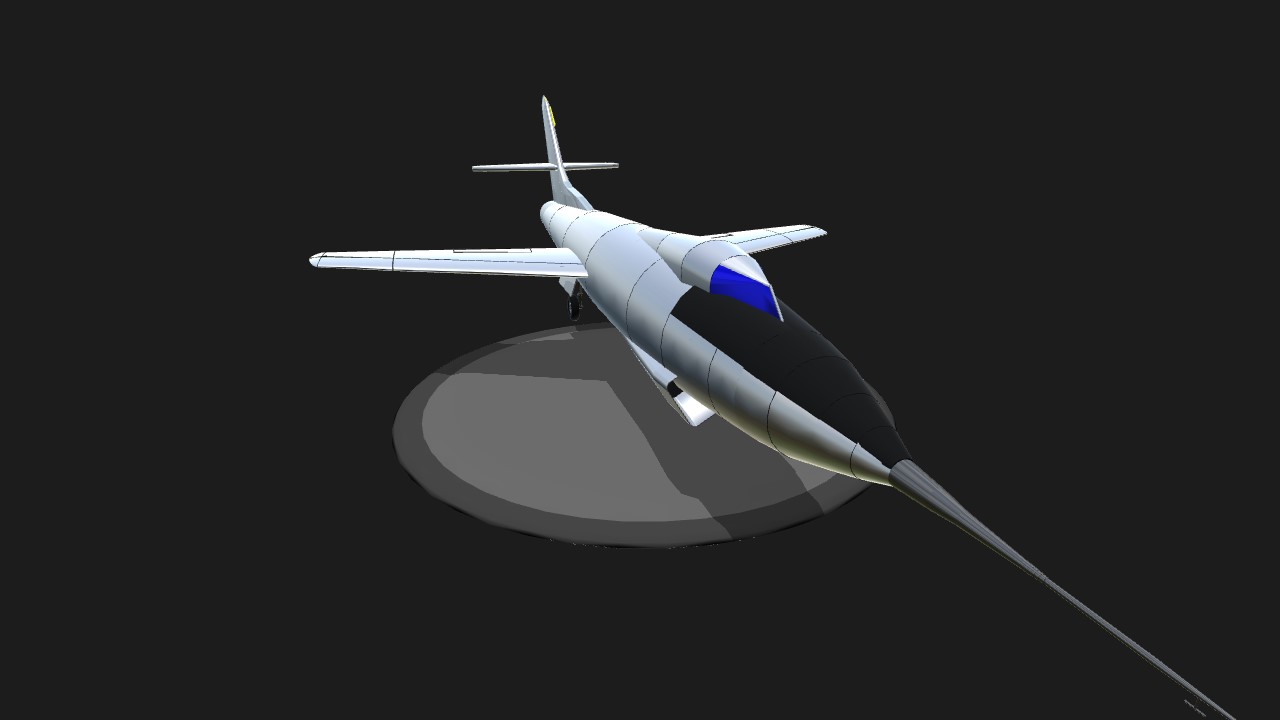
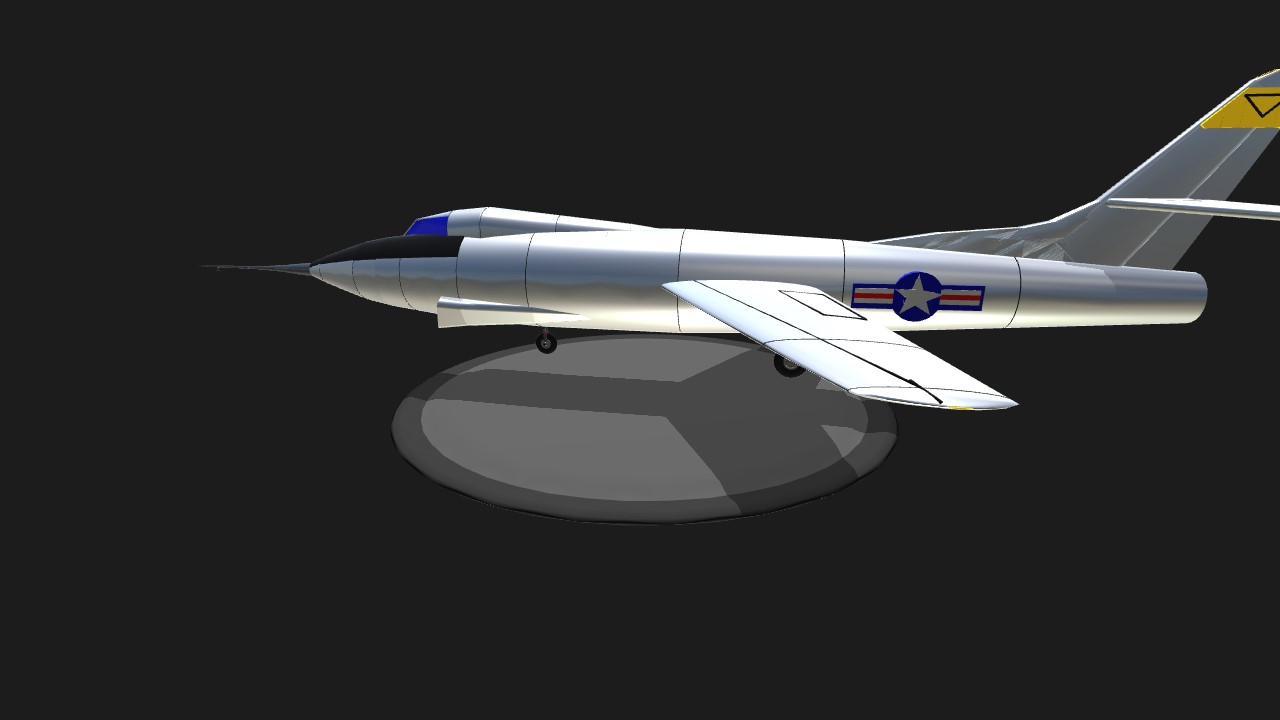
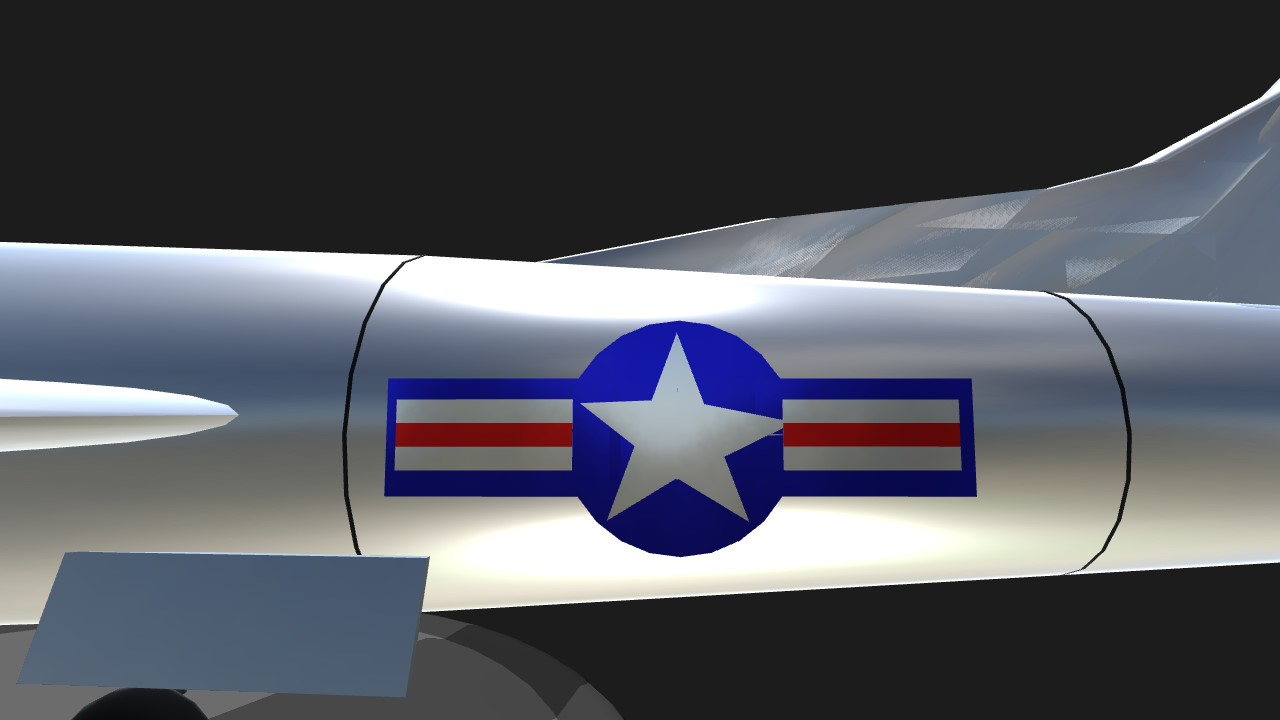
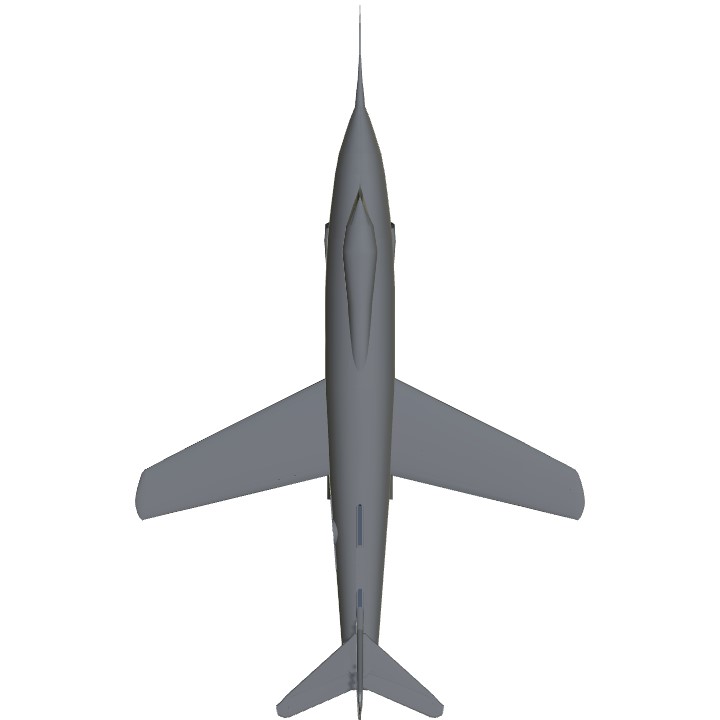
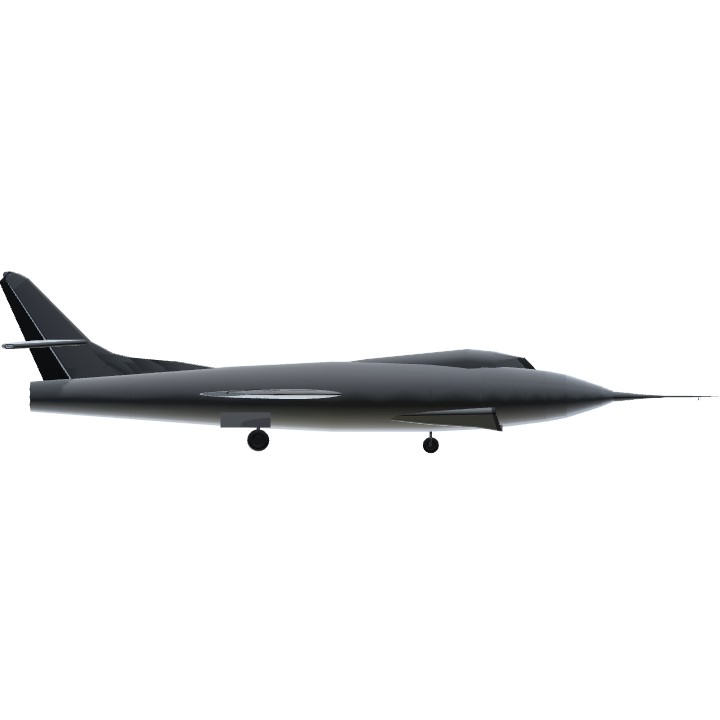
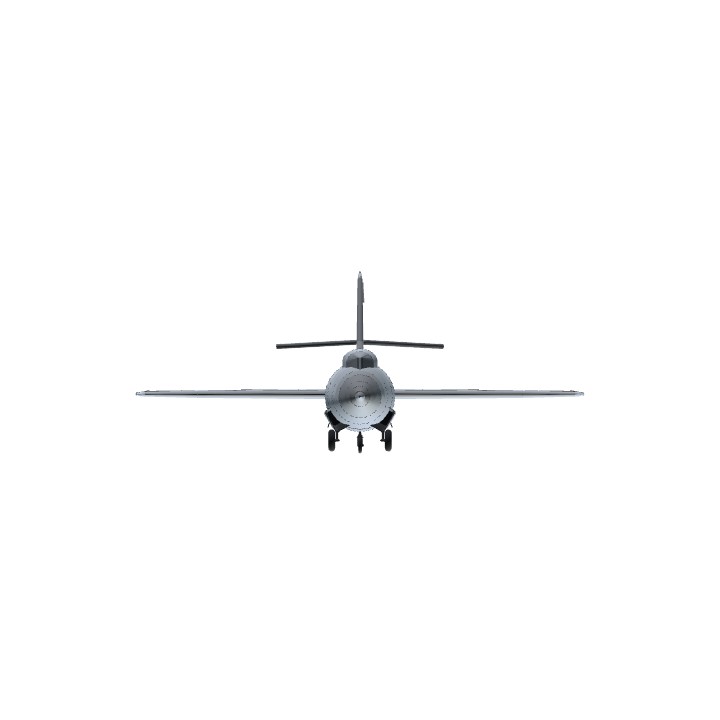
@Verterium thank you :D
@FennVectorCWA Those are really good!!!!
@Verterium
My page
You can contact me if you have FB, i didn't post some of my work yet
@FennVectorCWA You probably are.
@Verterium if i am allowed to copy and paste facebook links, sure
@FennVectorCWA BTW great art in your bio!!! You have any more that I can see? Also if it's StarWars related my little brother would love it.
@FennVectorCWA Nah, too lazy.
@Verterium Ad Moar Kats
@FennVectorCWA :DDDDD
@FennVectorCWA :D
great bio by the way :D
Thank you!!!! @MrMecha
@Verterium No problem (ฅ´ω`ฅ)
Thanks! @Sparrow007
No problem
Thank you! @Temmie @Goblix
Thanks! @Ctracerx2
@PhilipTarpley Thank you!!!!!
Very nice.
Thank you! @@MechWARRIOR57
Thanks! @Macer23T
Thank you! @Insertname
Thanks! @rubbishcraft @Luuk2909
You're welcome @Verterium .
Thank you! @mblastr